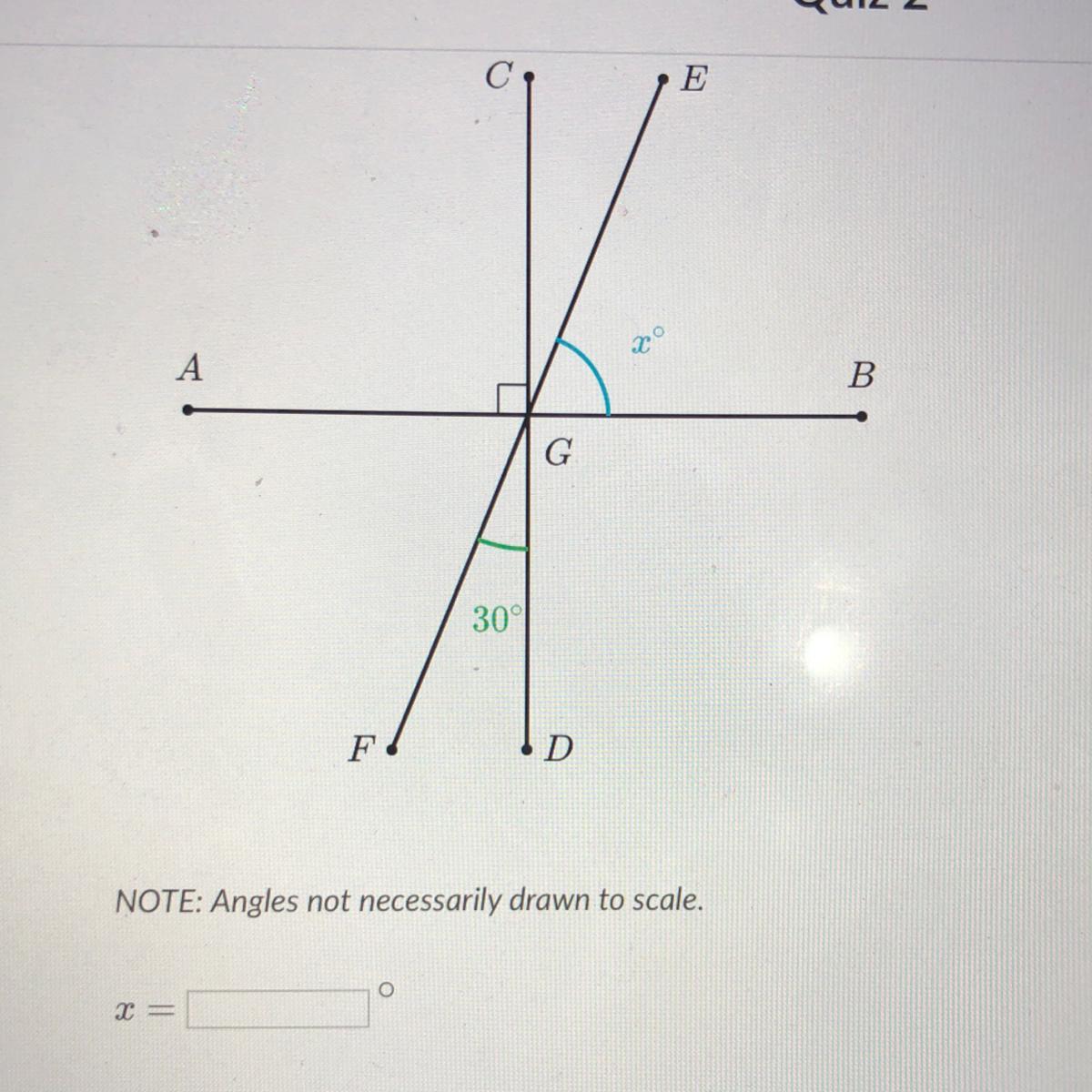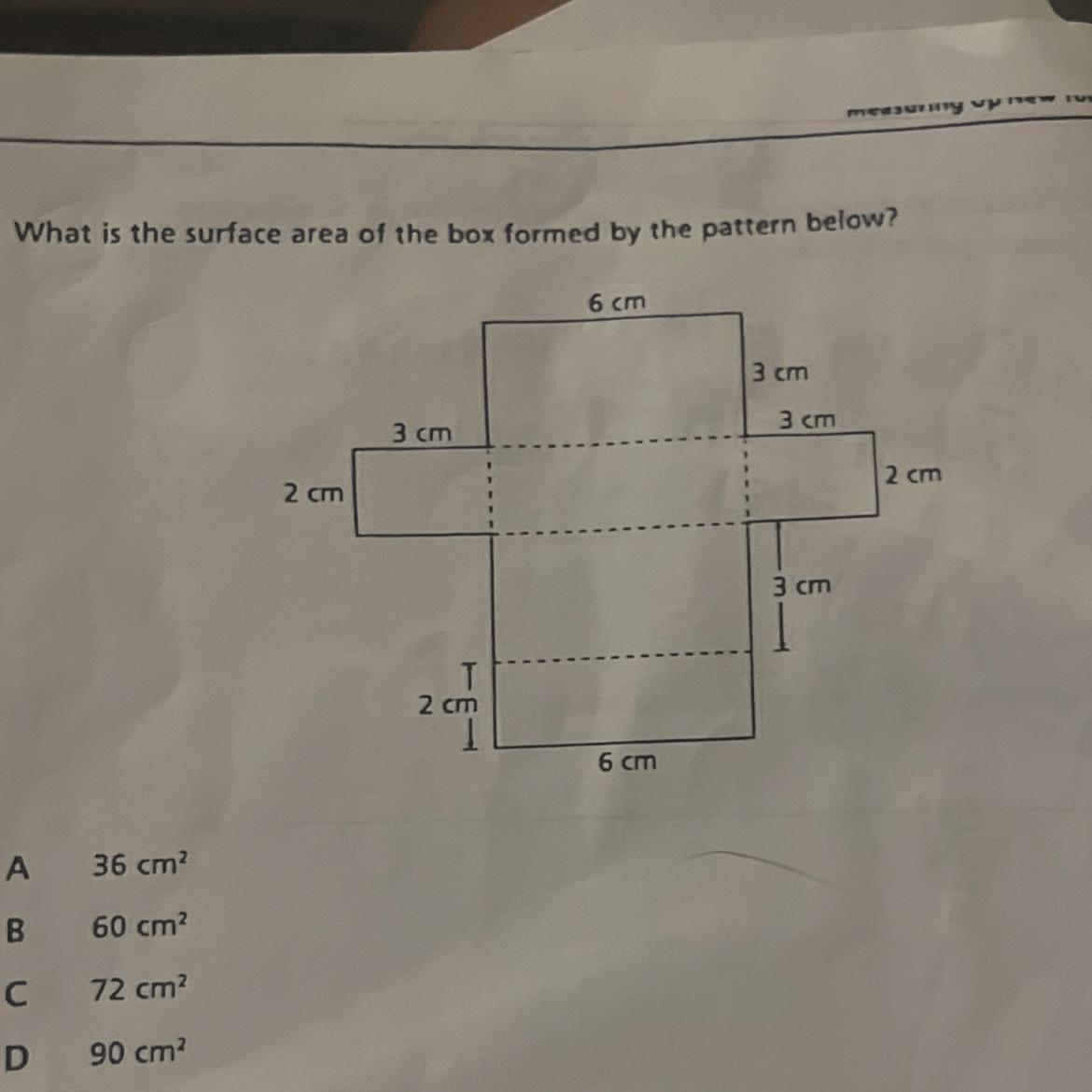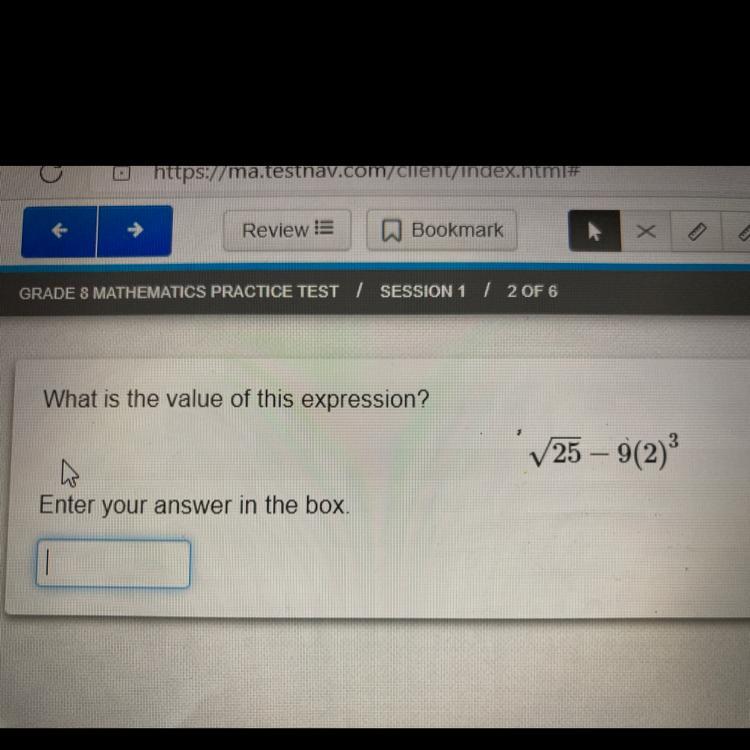Solve the following system using the elimination method. Enter your answer as an ordered pair in the form (x,y) if there is one, unique solution. Enter All if there are infinitely many solutions and enter None if there are no solutions. 6x-5y=392x+6y=-10
Answers
Given the system of equations:
\(\begin{gathered} 6x-5y=39\rightarrow(1) \\ 2x+6y=-10\rightarrow(2) \end{gathered}\)We will use the elimination method to find the solution to the system
We will eliminate (y) first, then solve the equations for (x)
Multiply the first equation by (6) and the second equation by (5) then add the new equations
The steps will be as follows:
\(\begin{gathered} 6x-5y=39\rightarrow(\times6) \\ 2x+6y=-10\rightarrow(\times5) \\ ============== \\ 36x-30y=234 \\ 10x+30y=-50 \\ ============== \\ 46x=234-50 \\ 46x=184 \\ x=\frac{184}{46}=4 \end{gathered}\)To find (y), substitute with (x) into equation (1)
\(\begin{gathered} 6\cdot4-5y=39 \\ 24-5y=39 \\ -5y=39-24 \\ -5y=15 \\ y=\frac{15}{-5}=-3 \end{gathered}\)So, the answer will be:
\((x,y)=(4,-3)\)Related Questions
The count in a bacteria culture was 100 after 15 minutes and 1800 after 40 minutes. Assuming the count grows exponentially,
What was the initial size of the culture?
Correct ___17.65___ bacteria
Find the doubling period.
____?_____ minutes
Find the population after 115 minutes.
____?_____ bacteria
When will the population reach 12000.
___?____ minutes
Answers
The population will reach 12000 bacteria after 56.4 minutes and other solutions are listed below
What was the initial size of the culture?We can use the formula for exponential growth, which is given by:
N = N0 * e^(kt)
where N is the final population, N0 is the initial population, k is the growth rate constant, and t is time.
To find the initial size of the culture, we can use the values given at 15 minutes and 40 minutes:
100 = N0 * e^(15k)
1800 = N0 * e^(40k)
Dividing the second equation by the first, we get:
18 = e^(25k)
Taking the natural logarithm of both sides, we get:
k = ln(18)/25
Solving for k, we get:
k = 0.1156
Substituting this value of k into the first equation, we can solve for N0:
100 = N0 * e^(15 * 0.1156)
N0 = 17.65
Therefore, the initial size of the culture was 17.65 bacteria.
The doubling periodTo find the doubling period, we use the fact that the population doubles when t increases by a certain amount, which we'll call T. That is:
N0 * e^(kT) = 2N0
Dividing by N0 and taking the natural logarithm of both sides, we get:
T = ln(2)/k
Solving for T, we get:
T = ln(2)/k ≈ 6.00 minutes
Therefore, the doubling period is approximately 6 minutes.
The population after 115 minutesTo find the population after 115 minutes, we can use the formula with the values of N0, k, and t:
N = N0 * e^(kt) = 17.65 * e^(0.1156 * 115) ≈ 10477448.92
Therefore, the population after 115 minutes is approximately 10477448.92 bacteria.
When the population reaches 12000To find when the population reaches 12000, we set N equal to 12000 and solve for t:
12000 = 17.65 * e^(0.1156t)
Dividing by 17.65 and taking the natural logarithm of both sides, we get:
ln(12000/17.65 ) = 0.1156t
Solving for t, we get:
t ≈ 56.42 minutes
Therefore, the population will reach 12000 bacteria after approximately 56.4 minutes.
Read more about exponential function at
https://brainly.com/question/2456547
#SPJ1
Find the perimeter of the figure below, composed of an isoceles trapezoid and one semicircle. Rounded to the nearest tenths place

Answers
I can't see the semi circle is that image. From what I see, the perimeter of the trapezoid is 41.
Explanation. To find the perimeter of a figure, you must add all sides together. In this case, add 13+ 8+ 10+ 10. Your answer is 41.
A bus company took a tour bus on the ferry when there were 30 people aboard. The ferry charged the bus company $180. The following week, the bus had 50 people on board and the ferry charged them $220. How much is the "base rate" for the empty bus? hint: look at the difference between number of people and cost to get cost per person and then cost without people
How much does each person cost?
Write an equation to show cost, c, of a bus with x number of people on it
Answers
Answer:
Base rate: $120
Rate: $2 per person
Equation: f(x)=2x+120
Step-by-step explanation:
If 30 people cost $180 and 50 people cost $220, the charge for 20 extra people is $40. This means, \(\frac{220-180dollars}{50-30people}=\frac{40dollars}{20people}=2\frac{dollars}{person}\).
These values correspond to a base rate for the bus of $120.
The function for the cost per bus with x number of people on it would be:
\(f(x)=2x+100\)
This can be checked by using the values given in the problem:
\(f(30)=2(30)+120=180\\f(50)=2(50)+120=220\)
The base rate of $120 and $2 per person satisfies the given equation and established values.
A bus holds 39 passengers. How many buses will 420 people need
Answers
Answer:
11 buses
Step-by-step explanation:
To the nearest whole number, what is the distance
between the points M(-5, 7) and L( 9, 12)?
Answers
Answer:
point m is -5;7 but point l is 9;12
Step-by-step explanation:
m there is negative but l is positive
an Expression for difference of a number s and -6
Answers
After answering the given query, we can state that The expression for the difference between a number s and -6 is: s - (-6) or s + 6
what is expression ?In numbers, you can multiply, split, add, or take away. The following is how a phrase is made together: Numeric number, expression, and arithmetic operator The elements of a mathematical expression are integers, factors, and functions. It is feasible to use contrasting words and terms. Any mathematical declaration containing variables, integers, and a mathematical action between them is known as an expression, also known as an algebraic expression. As an example, the expression 4m + 5 is composed of the expressions 4m and 5, as well as the variable m from the provided equation, which are all separated by the mathematical symbol +.
The expression for the difference between a number s and -6 is:
s - (-6)
or
s + 6
To know more about expressions visit :-
https://brainly.com/question/14083225
#SPJ1
c=5 and d=4 \(6 {c}^{2} - 5d + 8\)what is the value?
Answers
Given c = 5 and d = 4
\(\begin{gathered} \text{ 6c}^2-5d+\text{ 8 } \\ \text{Substituting the values of c and d into 6c}^2-5d+\text{ 8 , we have} \\ \text{6c}^2-5d+\text{ 8 }=6(5)^2-5(4)+\text{ 8} \\ =6(25)\text{ - 20 + 8} \\ =150-12 \\ =138 \\ \\ \text{The value of the expression is 138} \end{gathered}\)Carbon-141414 is an element that loses about 10\%10%10, percent of its mass every millennium (i.e., 100010001000 years). A sample of Carbon-141414 has 600600600 grams. Which graph shows the sample's mass yyy (in grams) after xxx millennia?
Answers
Answer:
Carbon-14 loses around 10% ( 0.1 in decimal form) of its mass, after one millennium.
Then if we start with a mass A of Carbon-14, after one millennium we will have a mass equal to:
A - A*0.1 = A*(0.9)
After another millennium, we will have a mass equal to:
A*(0.9) - A*(0.9)*0.1 = A*(0.9)^2
And so on, this is an exponential decay.
We already can see the pattern here, after x millenniums, the mass of carbon-14 will be:
M(x) = A*(0.9)^x
Now, in this problem we have 600 grams of carbon-14, then the equation for the mass will be:
y = M(x) = 600g*(0.9)^x
And the graph of this equation is shown below.

Answer:
S(t)=600(0.9)
Step-by-step explanation:
Losing mass at a rate of 10\%10%10, percent per millennium means the sample keeps 100\%-10\%=90\%100%−10%=90%100, percent, minus, 10, percent, equals, 90, percent of its mass each millennium.
So each millennium, the size is multiplied by 90\%90%90, percent, which is the same as a factor of 0.90.90, point, 9.
If we start with the initial mass, 600600600 grams, and keep multiplying by 0.90.90, point, 9, this function gives us the mass of the sample ttt millennia from now:
S(t)=600(0.9)^tS(t)=600(0.9)
t
Question 5 of 23
What is the solution to the inequality below?
√x<3
A. x < 9 or x 20
B. x < 9 and x > 0
C. x< 9 or x>-9
D. x < 9 and x>-9
Answers
Answer:
Step-by-step explanation:
HELP!!!Joe can type 40 words every 2 minutes. How many words can he type in 5 minutes?
Answers
Answer:100
Step-by-step explanation:
40+40 =80 +20=100
What is arcsin(13/24)
Please help answer do in 30 minutes

Answers
How long must 100 be invested at a rate of 4% to earn 32.00 in interest
Answers
Round to the nearest thousands 34,385
need help
Answers
Answer:34,000
Step-by-step explanation:
Answer:
its 34,000 because it below 5
Step-by-step explanation:
brainliest please
Write g(x) so that it is the inverse of the given function f(x). f(x) = 1/3x - 5/3 g(x) =
Answers
9514 1404 393
Answer:
g(x) = 3x +5
Step-by-step explanation:
The inverse function can be found by solving ...
x = f(y)
x = 1/3y -5/3 . . . . . use the definition of f(x)
3x = y -5 . . . . . . . . multiply by 3
3x +5 = y . . . . . . . .add 5
Then the inverse function is ...
g(x) = 3x +5
Suppose that there is a black urn containing nine black balls and three yellow balls and there is a yellow urn containing six black balls and six yellow balls. An experiment consists of selecting at random a ball from the black urn and then (without replacing the first ball) selecting at random a ball from the urn having the color of the first ball.
Required:
a. Construct a tree diagram showing the probabilities associated with this problem. Write a probability on each branch (6 branches).
b. Find the probability that the second ball is yellow.
Answers
Answer:
See Annex for tree diagram and all probabilities
b) P(2y) = 0,329
Step-by-step explanation:
a) Attached
b) Probability of the second ball is yellow P(2y) is equal to the probability of the second ball is yellow given that the first one is black ( 0,204 ) plus the probability f the second ball is yellow given that the first one is yellow ( 0,125)
P(2y) = 0,204 + 0,125
P(2y) = 0,329

The regular price of a CN Tower Souvenir was $32, During its sale, The price was reduced down by $24, Find the percent discount
Answers
Answer:
Discount of 25%
Step-by-step explanation:
To find the percent discount, subtract the big number minus small number then divide by the original number.
\(\frac{32-24}{32}\)
\(\frac{8}{32} \\\)
Reduce
\(\frac{1}{4}\)
Change to a decimal by dividing
1/4 = 0.25
Change to a percent by moving the decimal two places right.
0.25 -----> 25%
Javon is helping his dad build a tree house. He has a piece of trim that is 11 feet long.
How many pieces can Javon cut that are 1 yard long?
How much of a yard will he have left over?
Answers
Answer:
Step-by-step explanation:
1 yard = 3 feet
11 feet * (1 yard)/(3 feet) =11/3 yards = 3⅔ yards
Javon can cut three one-yard pieces. ⅔ yard is left over.
Y=-x-6 with slope graph Please help me answer this
Answers
Answer: the slope of the graph is -1
Step-by-step explanation: because x has a coefficient of negative 1 but if you wanted to graph this line, you have to be careful since you go down 1 unit and right 1unit. The line is descending since it has a negative slope so technically the slope is -1/1 but we can just say it’s -1
i
dont
get
this
help
rn

Answers
Answer:
6 first box. 12 second box. 21 third box. 10 fourth box. 4 fifth box.
Step-by-step explanation:
Look for common denominaters, that will show you what to multiply the equation by to get rid of fractions.
To which sets does 13 belong too??
Answers
Answer: 13 is in C (the set of complex numbers)
Step-by-step explanation:
13 is in R (the set of real numbers)
13 is in Q (the set of rational number)
13 is in Z (the set of integers)
13 is in N (the set of natural numbers)
help i will give brainly pleasereee

Answers
Answer:
the answer is 60
Step-by-step explanation:
please mark brainlts
PLease help asap. explain and make it quick and short

Answers
Multiply total mass by portion that is water:
75 x 0.6 = 45
Water = 45 kilograms.
Answer:
45 kilograms
Step-by-step explanation:
Hope this helps
What is the surface area of the box formed by the pattern below?

Answers
Answer:
h
Step-by-step explanation:
Car a has reporte fuel rating 25 miles per gallon how many gallons of fuel does it need for a 140 mile trip
Answers
Answer:
5.6 or 5 3/5 gallons
Step-by-step explanation:
25 miles per gallon
Using the r=d/t formula, we have 140mi/25mi per gal.
140/25
Solve:
28/5
=5.6 or 5 3/5
Answer??? I need help ASAP

Answers
Answer:
it is -67
Step-by-step explanation:
let k be a field. verify that the set k[x] of all polynomials with coefficients in k, under the usual addition and multiplication operations, forms a ring. in particular, you must verify that there are additive and mul- tiplicative identities, that addition and multiplication are commutative and associative, that every polynomial has an additive inverse, and that the dis- tributive law holds. do not write out detailed proofs of all this; just specify what the additive identity is, what the additive inverse of a polynomial is, and what the multiplicative identity is.
Answers
Let K be a field in which (to demonstrate K[n] of all bolynomial coefficients in K below the typical addition and multiplication operations forms a ring]
Since the addition of two polynomials is once more, (i) (To show = (K(n), +) is abelian grouk) is closed under addition (of binary operation).
polynomial a Associativity under addition, assuming that Pa 2, 2 exists in k[u].
K[n] is closed when added, and qinis both (n+bente -+ n, mand p are all different) or nemcp: K + + + (An+ba) +- + = (90+bot (o) +(9, +b, +G) K € - - + p(x+2(m) + 2(x) = ((Qutbe) +(,+bi) K + + + --+ Cpn3 = (bini)+ (qini-eron) K[n] is an addition associativite.
If H 2(4)=0 is additive identity, then clearly pinto-b =10 belynomial is additive identity of KO OR let pin's Po+?не-томни екси.
The inverse element of K[n] is additive inverse- let b(m + 2(120)
To learn more about bolynomial coefficients here
https://brainly.com/question/20630027
#SPJ4
14. The screen size of a television is measured along
the diagonal of the screen from one corner to
another. If a television has a length of 28 inches
and a diagonal that measures 32 inches, what is
the height of the television set to the nearest
tenth?
Answers
Answer:
15.5 inches
Step-by-step explanation:
height² = diagonal² - length²
height = √(32² - 28²) ≅ 15.5 inches
I will give BRAINLIEST!! Important. Answer Quickly but CORRECTLY Please! =)
Mike earns $1,200 a month. He saves 15% of the money and spends the rest. How much does he spend each month?
Answers
Answer:
$1020
Step-by-step explanation:
15 percent of 100 multiplied by $1200 is $180.
Therefore Mike saves $180.
Then $1200 minus 180 is equal to $1020.
He spends $1020 each month.
five times eight is what
Answers
Answer:
40
Step-by-step explanation:
5*8 = 40
Hope this helps.
find the distance from A to C.
A:(-2,4) C:(3,-3)
Answers
I think that’s right
:)/